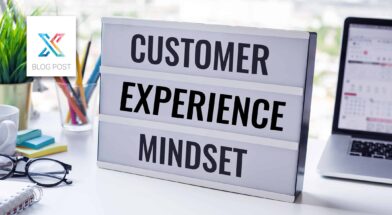As we approach 2025, professional services firms, particularly within the architecture, engineering, and construction (AEC) industry, are experiencing a transformative wave in client experience (CX) management. As firms strive to differentiate themselves in competitive markets, Client Experience (CX) has emerged as a critical business discipline. CX is no longer an optional enhancement but a strategic imperative for driving client retention, loyalty, and sustainable growth.
In the coming year, CX trends will be characterized by deeper personalization, data-driven insights, and a stronger connection to business outcomes. Firms are also redefining how they listen to and act on client feedback, addressing challenges like leadership transitions and mergers, and even exploring sustainability as a CX differentiator. These shifts reflect an industry-wide realization: exceptional CX is not just about meeting expectations but about creating meaningful, long-term value for both clients and firms.
Here are seven key trends shaping CX in the year ahead, along with practical insights into how firms can stay ahead of the curve:
1. A Drop in Net Promoter Score (NPS) Across the Industry
Net Promoter Scores (NPS) are experiencing a surprising decline across the AEC industry, with top quartile scores dropping by five points on average in 2024. This trend may seem counterintuitive, but several factors are at play:
- Industry Saturation: As CX strategies are adopted by more firms, many are still in the early stages of their journey, leading to inconsistent or immature practices that impact NPS.
- Rising Standards: Increased focus on CX means higher client expectations. What was considered exceptional service a few years ago is now viewed as standard.
This decline doesn’t mean CX efforts are failing; rather, it highlights the need for firms to continuously evolve their strategies to stay competitive.
How Firms Can Respond:
- Innovate to Differentiate: Early adopters must go beyond standard practices to deliver unique, high-value experiences that set them apart.
- Benchmark and Refine: Regularly assess NPS and other metrics to identify areas for improvement and adjust strategies to meet evolving client expectations.
- Train for Consistency: Ensure all employees are equipped with the tools and training needed to deliver a consistent, high-quality client experience.
2. Aligning CX Metrics with Business Outcomes
The CX landscape is shifting from operational metrics like satisfaction scores to business outcome-driven metrics. By linking CX metrics to these tangible goals, firms can better measure the ROI of their CX initiatives. This alignment enables firms to assess CX’s direct impact on business performance, creating a more compelling case for continued CX investment.
Firms are realizing that CX metrics must demonstrate tangible value, such as:
- Predictive Analytics: Forecasting project success or risk based on real-time client feedback during project delivery.
- Financial Connections: Linking NPS, loyalty, and sentiment scores to profitability, revenue growth, and share-of-wallet.
- Outcome-Oriented Metrics: For example, AEC firms are tying CX performance to client outcomes like faster project approvals, reduced delays, or better employee retention in designed spaces.
How Firms Can Respond:
- Integrate CX into Business Goals: Align CX with firm-wide objectives such as profitability, operational efficiency, and client growth.
- Invest in Dashboards: Use real-time dashboards to connect CX insights with project and financial data for actionable insights.
- Adopt Governance Models: Create structures to ensure CX metrics inform decisions across sales, marketing, operations, and project delivery.
3. The Emergence of CX Teams and Leadership
Across the professional services landscape, dedicated CX teams and leaders are emerging to steer CX strategy and execution. As CX becomes a business discipline in its own right, many AEC firms are appointing Chief Experience Officers (CXOs) or CX leaders to ensure CX initiatives align with broader organizational goals. This trend signals a shift toward CX as a proactive function, with specialized teams ensuring that CX is prioritized across all client touchpoints and throughout the client journey.
In 2025, firms will start to move beyond appointing individual CX leaders to building dedicated CX teams, creating roles such as:
- CX Analysts to interpret data and provide actionable insights.
- Client Feedback Managers to oversee VoC programs and act on findings.
- CX Specialists to design personalized client journeys and ensure touchpoints align with client expectations.
How Firms Can Respond:
- Expand CX Leadership: Appoint CX leaders if you haven’t already and provide them with the resources to build a team.
- Cross-Functional Collaboration: Ensure CX teams work closely with marketing, sales, and operations to create a seamless experience.
- Train the Entire Organization: Provide CX training to all employees, from project managers to administrative staff, to create a client-centric culture.
4. Hyper-Personalization: Tailored Client Experiences
Hyper-personalization is becoming the gold standard for CX, leveraging advanced technology to anticipate and meet client needs. As clients expect tailored, meaningful interactions, firms are turning to advanced technologies, such as artificial intelligence and predictive analytics, to deliver a more personalized service.
Key Elements of Hyper-Personalization:
- AI-Driven Personalization: Leveraging AI enables firms to anticipate client needs, creating a seamless, proactive experience that strengthens client relationships.
- Predictive Analytics for Proactive Service & Retention: Predictive analytics enable firms to identify clients at risk of churn, allowing teams to address concerns before they escalate.
- Enhanced Onboarding Experiences: A smooth onboarding process has never been more important, with AEC firms investing in onboarding programs that prioritize client satisfaction from day one.
- Journey Mapping: Map the entire client journey to identify critical touchpoints where personalized interactions can add value.
- Hyper-Segmentation: Segmenting clients by industry, project type, and relationship maturity allows firms to design tailored experiences throughout the client journey, ultimately driving client satisfaction.
- Human-Centered Design & Empathy-Driven Services: By embedding empathy and human-centered design principles into their services, firms can foster deeper, more genuine client connections, resulting in enhanced client satisfaction.
How Firms Can Respond:
- Leverage Technology: Invest in AI and predictive analytics tools to enhance personalization at scale.
- Focus on Empathy: Combine technology with human-centered design to ensure a personal, empathetic approach to client interactions.
- Design the Ideal Project Experience: Use client insights to create project workflows that feel seamless, proactive, and tailored to individual needs.
5. Expanding Voice of Client (VoC) Programs
Voice of the Client (VoC) programs are evolving from traditional, occasional surveys into comprehensive, dynamic systems designed to capture and act on client feedback continuously. This shift reflects the growing emphasis on building stronger client relationships, improving project outcomes, and fostering long-term loyalty. By 2025, successful firms will prioritize creating closed-loop feedback systems that integrate client insights into every aspect of their operations. The evolution of VoC programs includes the following key components:
- Milestone-Based Feedback Surveys:
Firms are increasingly collecting feedback at critical project stages—such as project kickoff, mid-project reviews, and project closeout—to address concerns in real time. This approach not only prevents issues from escalating but also allows teams to make immediate adjustments to improve client satisfaction and project outcomes. - Interviews, Client Panels, and Workshops:
Hosting in-depth discussions with key clients offers an opportunity to explore specific challenges, needs, and opportunities in detail. These collaborative sessions provide actionable insights that can shape service delivery, enhance innovation, and align firm strategies more closely with client expectations. - Social Listening:
Monitoring client sentiment on platforms like LinkedIn, forums, and during industry events provides firms with a broader understanding of client perceptions, emerging trends, and competitive dynamics. - Data-Rich Client Insights:
Advanced analytics tools enable firms to analyze client feedback at a granular level, uncovering actionable insights that inform business strategies. For example, firms can identify patterns in client expectations, predict potential risks, and prioritize resources for the most impactful opportunities.
Firms are moving beyond traditional satisfaction surveys to create VoC programs that deliver actionable, real-time insights.
How Firms Can Respond:
- Implement Feedback Loops: Ensure client feedback is not only collected but also acted upon quickly.
- Diversify Feedback Channels: Use a mix of surveys, interviews, focus groups, and social listening to capture a holistic view of client sentiment.
- Empower Teams with Data: Make feedback accessible to project teams so they can adapt and improve client experiences on the fly.
6. CX in Mergers, Acquisitions, and Private Equity
With mergers, acquisitions, and private equity investments on the rise, CX should play a pivotal role in ensuring a smooth transition and protecting client relationships. M&A activities can often lead to client disruptions, and firms are increasingly recognizing the importance of a CX strategy during these transitions. By focusing on the client experience, firms can mitigate client attrition and enhance the overall value of the acquisition. Firms are using CX to:
- Evaluate Client Loyalty: During pre-M&A due diligence, assessing the health of client relationships provides critical insights.
- Ensure Post-Merger Integration: Align CX across merged entities to create a seamless client experience.
- Maximize Growth: Use CX to retain existing clients and attract new ones, enhancing the value of PE-backed firms.
How Firms Can Respond:
- Develop CX Playbooks for M&A: Create strategies for maintaining client loyalty and trust during transitions.
- Focus on Unified Experiences: Ensure all clients, employees, and stakeholders feel aligned with the new organization’s goals.
- Measure CX in M&A Outcomes: Track how CX efforts impact client retention, revenue growth, and operational efficiencies post-merger.
7. CX in Succession Planning
7. CX in Succession Planning
For firms planning for leadership succession, CX is a critical consideration. As new leadership takes the reins, maintaining client continuity is paramount. Effective succession planning now includes strategies to retain client trust and loyalty, ensuring a seamless transition that doesn’t disrupt client relationships. Firms are integrating CX strategies into their succession planning to safeguard client satisfaction and loyalty during these pivotal moments. Firms are focusing on:
- Institutionalizing Client Knowledge: Capturing insights about client needs, preferences, and expectations to transfer to new leaders.
- Training Future Leaders: Equipping rising leaders with CX tools and methodologies to maintain trust and loyalty.
- Amplifying Feedback Efforts: Increasing the frequency of feedback collection during leadership transitions to identify and address concerns early.
How Firms Can Respond:
- Develop Knowledge Transfer Systems: Use tools like journey maps and VoC insights to ensure seamless leadership transitions.
- Focus on Empathy: Train new leaders to build trust and rapport with clients during their onboarding phase.
- Use Metrics for Succession: Identify potential leaders based on their ability to foster strong client relationships.
Bonus Trend: Sustainability as a CX Driver
Sustainability is emerging as a key differentiator in client experience (CX), particularly as Millennials and Gen Z clients increasingly prioritize environmentally and socially responsible practices. These generations are driving demand for businesses to demonstrate a commitment to sustainability—not just in their operations but throughout the entire client journey. Forward-thinking firms are embracing this shift by incorporating sustainability into every stage of their client experience. Key strategies include:
- Highlighting sustainability in project delivery and client communications.
- Aligning sustainable practices with client expectations to build deeper trust.
How Firms Can Respond:
- Communicate Sustainability: Showcase your firm’s commitment to sustainability in proposals, presentations, and client interactions.
- Gather Feedback on Sustainability: Use VoC programs to understand how sustainability impacts client satisfaction and loyalty.
Conclusion
In 2025, CX is no longer a nice-to-have—it’s a critical driver of success in professional services. By embracing these trends, AEC and professional services firms can build stronger client relationships, differentiate themselves from competitors, and drive meaningful business outcomes. Staying ahead in this client-centric era means continuously innovating, listening, and delivering exceptional experiences that clients won’t forget.





